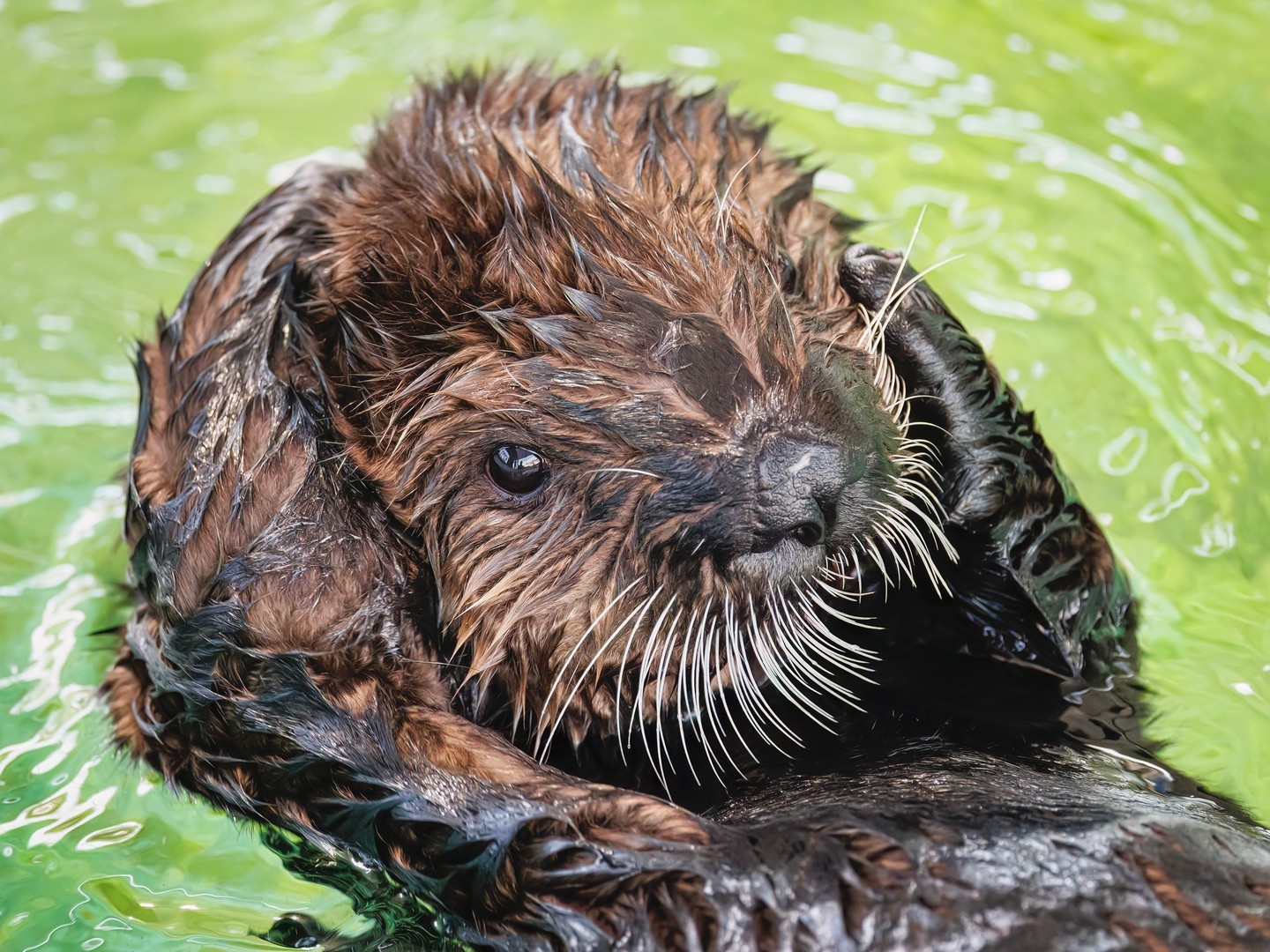Summary:
1. Sea otters are keystone species that play a crucial role in maintaining the balance of their ecosystems.
2. Their presence ensures the control of sea urchin populations, which prevents overgrazing of kelp forests.
3. Healthy kelp forests foster a diverse community of fish and shellfish, contributing to a healthier ocean.
4. Humans can help sea otters by raising awareness, reducing their carbon footprint, and properly disposing of chemicals and waste.
5. An adorable photo of a sea otter named Cee accompanies the article.
Are you AWARE that sea otters are more than just cute? They are CRUCIAL!
Sea otters are undoubtedly one of the most adorable creatures that inhabit our planet. With their playful nature, cute appearances, and expressive eyes, it’s hard not to be captivated by these charming marine mammals. But there’s so much more to sea otters than just their cuteness – they are an incredibly important and crucial species in maintaining the health and balance of their ecosystems. Sea otters are considered keystone species, and their presence or absence significantly impacts the overall well-being of their surroundings.
So, what exactly does it mean to be considered a keystone species? Keystone species have a disproportionately large effect on their environment compared to their abundance. They play a critical role in maintaining the balance and stability of their ecosystems. Without keystone species, the delicate web of life can unravel, leading to unforeseen consequences for other organisms sharing the same habitat.
Sea otters, being keystone species, hold a vital place in the marine ecosystem. They primarily reside in coastal areas, such as rocky shores, kelp forests, and estuaries, along the North Pacific Ocean. One of their significant contributions to the ecosystem is their influence on sea urchin populations. Sea urchins, a favorite otter prey item, have a voracious appetite for giant kelp and other algae.
When sea otters thrive in their environments, they keep sea urchin populations in check. This control prevents overgrazing of kelp forests, essential for numerous marine species. Giant kelp, in particular, forms dense underwater forests known as kelp canopies. These canopies create a diverse and productive habitat for many fish and shellfish, providing shelter, food, and breeding grounds. The presence of sea otters facilitates the growth and abundance of kelp, which directly benefits the entire ecosystem.
However, when sea otters are scarce or absent, sea urchins can multiply unchecked and wreak havoc on the ecosystem’s delicate balance. With their insatiable appetites, sea urchins can devastate kelp forests, creating areas of barren rock instead. This shift in habitat affects not only the kelp but also the entire community of fish and shellfish that rely on the kelp for survival. Reduced kelp canopy leads to a decline in biodiversity and negatively impacts the ocean’s overall health.
Understanding the importance of sea otters and their keystone role in the marine environment is crucial for conserving and preserving these remarkable creatures and their ecosystems. By spreading awareness about their significance, we can ensure a brighter future for sea otters and the oceans they call home.
Apart from raising awareness, we can contribute to the well-being of sea otters and their habitats in several ways. One of the key steps we can take is to reduce our carbon footprint. Climate change poses a significant threat to all ecosystems, including the ones sea otters rely on. By adopting sustainable practices, such as conserving energy, minimizing waste, and embracing renewable energy sources, we can positively impact the environment and help protect these incredible creatures.
Furthermore, it’s essential to properly dispose of chemicals and waste that could end up in our oceans. Pollution from various sources can be detrimental to sea otters’ health and their habitats’ biodiversity. By ensuring responsible waste management practices, we can minimize the negative impacts of pollution and create a cleaner, safer environment for all marine life.
In conclusion, sea otters are more than just cute furry creatures; they are integral to their ecosystems. As keystone species, they play a critical role in maintaining the balance and health of their habitats. Their presence keeps sea urchins in check, prevents overgrazing of kelp forests, and fosters a vibrant and diverse community of fish and shellfish. It’s our responsibility to protect and preserve these remarkable animals by raising awareness, reducing our carbon footprint, and properly managing waste. Together, we can ensure that sea otters continue to thrive and create a healthier ocean for all species.
*****
Source Description
Are you AWARE that sea otters are more than just cute? They are CRUCIAL! Otters are keystone species, meaning that the presence or absence of sea otters has an inordinately large effect on the health and balance of their ecosystem. When otters are plentiful, sea urchins, a favorite food item, are kept in check. When sea otters are scarce, sea urchins can consume too much giant kelp and other algae, reducing the kelp canopy and the species of fish and shellfish living in it. Sea otter populations help increase kelp abundance, creating a healthier ocean!
You can help sea otters by making others AWARE of how important they are, reducing your carbon footprint, and properly disposing of chemicals and wastes that can end up in our oceans.
Photo of Cee, the sea otter by Robin Riggs


